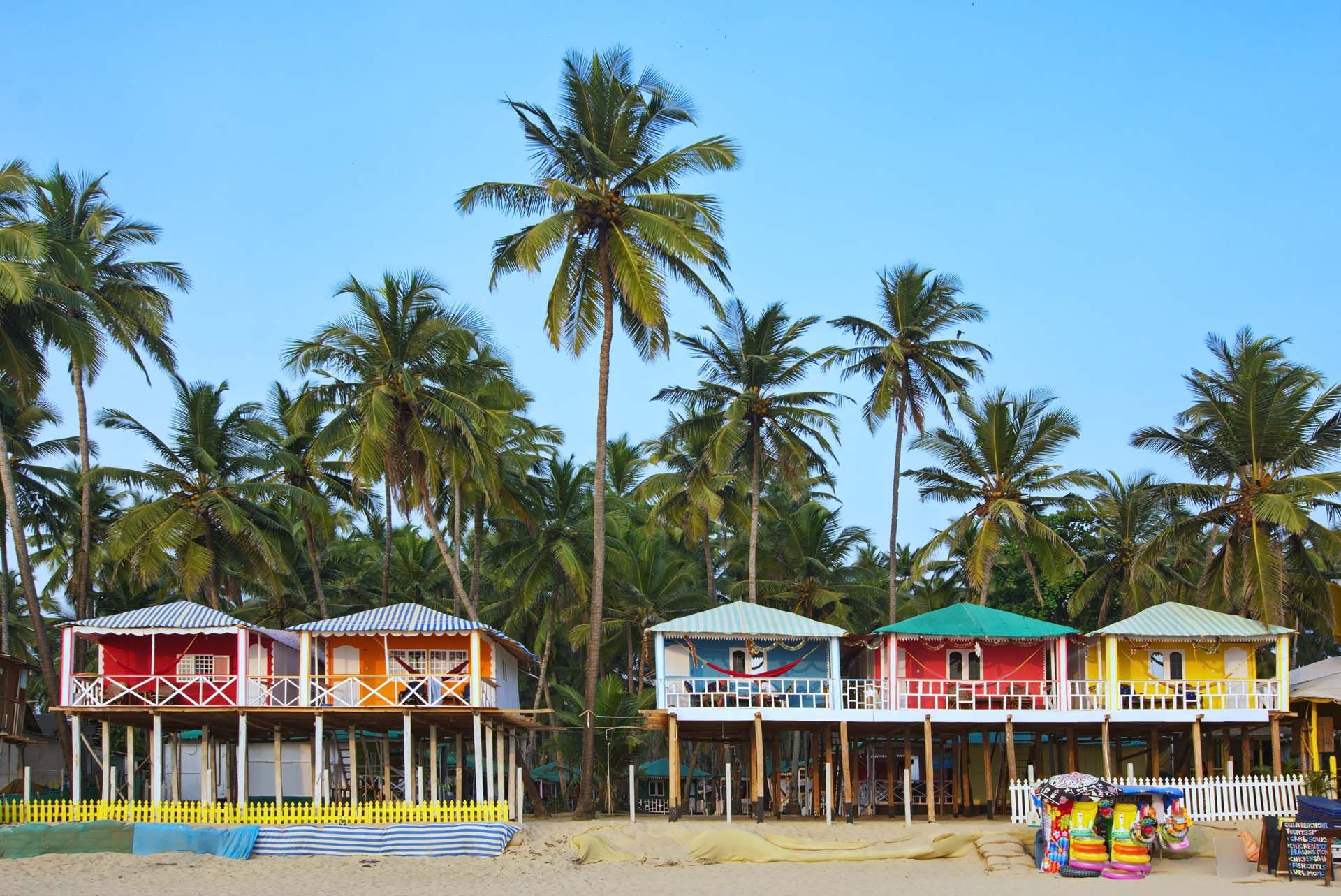Best North Goa beaches
Markedly livelier and more nightlife oriented than the South, development in North Goa is concentrated behind the 7km strip of sand that stretches from Fort Aguada to Baga Creek.
Just like the South, the Nort hosts some of the best beaches in Goa. Encompassing the resorts of Candolim, Calangute and Baga, this is Goa’s prime charter belt. As such, it’s an area most independent travellers choose to avoid.
Since the advent of mass tourism in the 1980s, the alternative scene has drifted progressively north away from the sunbed strip to Anjuna and Vagator, which are among the area’s best beaches.
Further north still, Arambol has thus far escaped any large-scale development.
Aswem and Mandrem, just south of Arambol, are this stretch of coast’s hot tips. Though rapidly filling up, they’re still reasonably off-track.
#6 Morjim
Relatively isolated, the village of Morjim was where Goa’s first Russian tourists headed in the early noughties. These days, it tends to attract more of a mix of Brits and Indians than Russians.
Morjim Beach itself is dramatic and well worth walking in the early morning, when you may see teams of fishermen hauling giant handnets from the surf. The spit at its southern end, opposite Chapora Fort, is also a great birding hot spot. In addition, cruising the Chapora River also affords good wildlife-watching opportunities. Back on the beach, this is another hotspot for Olive ridley turtles.
How to get there by bus
Half a dozen buses a day skirt Morjim en route to Panjim, the first at 7 am. Heading the other way, you can pick up a direct bus from Panjim at 5 pm, with hourly services from Mapusa via Siolim after 11 am. They’ll drop you on the main road, a 5min walk from the beachfront area at Vithaldas Waddo.












